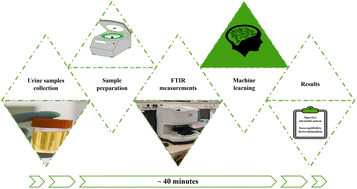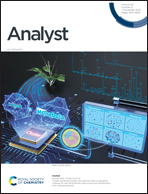Culture-independent susceptibility determination of E. coli isolated directly from patients’ urine using FTIR and machine-learning†
Abstract
One of the most common human bacterial infections is the urinary tract infection (UTI). The main cause of UTI is Escherichia (E.) coli bacteria (∼75%). Because most of the bacteria are resistant to many antibiotics as a result of their indiscriminate overuse, it is extremely important, for effective treatment, to identify the infecting bacteria and to determine, as quickly as possible, their susceptibility to antibiotics. Classical methods require at least 48 hours for determining bacterial susceptibility. In this study, 1798 E. coli isolates from different UTIs were isolated directly from patients’ urine, measured by Fourier transform infrared (FTIR) microscopy and analyzed by machine learning algorithms for simultaneous identification and susceptibility determination within 40 minutes since receiving the urine samples. Our results show that it is possible to identify the bacteria at the species level with an accuracy of ∼95% and to determine their susceptibility to different antibiotics with an accuracy ranging from 75% to 83%.



 Please wait while we load your content...
Please wait while we load your content...